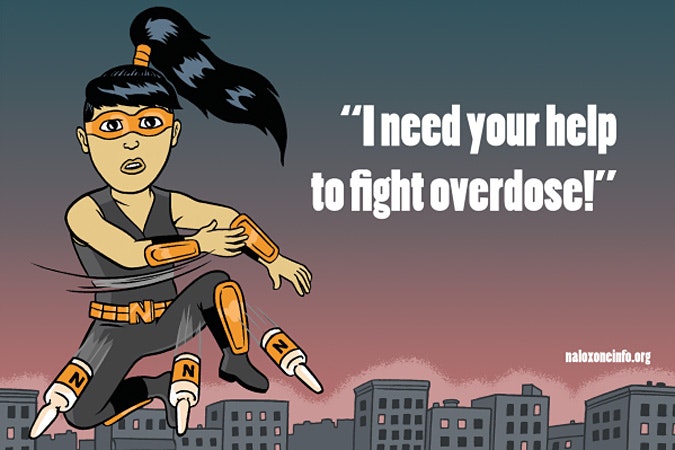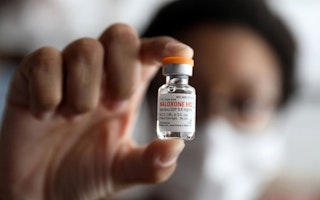Power in a Bottle
By Naloxone Ninja

You may think that superheroes only fight crime, but they can also fight serious public health issues like drug overdose—a major and often overlooked cause of death among people who inject heroin or other opioids.
Armed with naloxone, the safe, effective, and easy-to-use antidote to opioid overdose, I travel the world fighting the overdose epidemic. And I’m not the only superhero with naloxone. Drug users, their families, outreach workers, and police around the globe have been trained to use naloxone to save lives.
You can help, too. In preparation for Overdose Awareness Day on August 31, here are the five main things you need to know about naloxone:
- Naloxone saves lives and should be available at the scene of any overdose. A recent study shows that areas with programs that distribute the opioid overdose antidote to people who use drugs and their friends have lower rates of overdose deaths than nearby communities without the programs. Naloxone is extremely safe, cheap, and easy to use. And, with overdose as a leading cause of death for drug users around the world, making naloxone easily available to them and those around them is a no-brainer.
- Naloxone is empowering. People who rescue friends using naloxone can feel an increased sense of self-efficacy and pride. One drug user who had saved a peer said, “I felt like a superhero or something, you know? You know how a superhero comes and saves the day? So you feel like you did something righteous and unselfish. … And that’s how you feel when you have to save somebody’s life and you’re able to do it, and utilize new techniques that you know. And a life is saved. It gives you a good feeling.” This increased sense of self-worth may translate into people taking better care of their own health. One study even found an increased rate of entry into drug treatment programs following overdose training.
- Naloxone attracts participants to other life-saving public health services, including harm reduction programs. For many people who use drugs, overdose is a much more immediate problem than HIV or hepatitis. By offering drug users what they want—naloxone—programs find that they often are able to engage new people in their other services, like HIV testing and treatment. For example, a harm reduction program in Tomsk, Russia, increased their number of participants by 60 percent when they started distributing naloxone.
- Advocates for HIV and hepatitis C prevention and treatment should be advocates for naloxone, too. People who use drugs have a 74 percent greater risk of overdose if they are HIV-positive. One Australian study found that 72 percent of deaths among subjects with hepatitis C were from drug overdose or suicide—not from advanced liver disease as a result of hepatitis. Naloxone is especially vital as a safety net for drug users living with these viruses.
- You can start your own naloxone program. In fact, naloxone is probably already legal in your country, and used in most operating rooms and emergency departments. To learn more, and to get the tools you need to start distributing naloxone to drug users, visit naloxoneinfo.org.
This August 31, I’ll be at an Overdose Awareness Day event in Melbourne, Australia. To find out what events or memorials are taking place in your area, visit overdoseday.com.
Naloxone Ninja is a harm reduction superhero fighting the global overdose epidemic.

